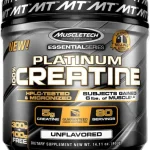Introduction to Strength Training and Muscle Building
Benefits of Strength Training and Muscle Building
Physical Benefits
Mental and Emotional Benefits
Long-Term Health Benefits
How Muscle Building Works: The Science Behind It
Muscle Hypertrophy Explained
Role of Nutrition in Muscle Growth
Importance of Rest and Recovery
Essential Strength Training Exercises
Compound Movements
Isolation Exercises
Bodyweight Training
Designing Your Strength Training Program
Setting Realistic Goals
Choosing the Right Frequency and Intensity
Progressive Overload: The Key to Growth
Nutrition for Muscle Building
Macronutrients: Protein, Carbs, and Fats
Micronutrients: Vitamins and Minerals
Supplements: Do You Need Them?
Common Mistakes to Avoid in Strength Training
Overtraining and Undertraining
Poor Form and Technique
Ignoring Recovery and Rest Days
Advanced Techniques for Muscle Growth
Drop Sets and Supersets
Eccentric Training
Periodization for Long-Term Progress
Strength Training for Different Age Groups
Teens and Young Adults
Middle-Aged Adults
Seniors (60+)
Conclusion: Building a Stronger, Healthier You
FAQs About Strength Training and Muscle Building
1. Introduction to Strength Training and Muscle Building
Strength training and muscle building are more than just ways to look good; they are essential components of a healthy lifestyle. Whether you’re a beginner or an experienced fitness enthusiast, understanding the fundamentals of strength training can help you achieve your goals effectively.
In this guide, we’ll explore the science behind muscle growth, the benefits of strength training, and practical tips to design a program that works for you. By the end, you’ll have the knowledge to transform your body and improve your overall health.
2. Benefits of Strength Training and Muscle Building
Physical Benefits
Strength training is not just about building muscle; it also improves bone density, boosts metabolism, and enhances physical performance. According to the American Council on Exercise (ACE), regular strength training can increase lean muscle mass, which helps burn more calories even at rest.
Mental and Emotional Benefits
Exercise, including strength training, releases endorphins, which reduce stress and improve mood. A study published in JAMA Psychiatry found that resistance training significantly reduces symptoms of anxiety and depression.
Long-Term Health Benefits
Strength training can lower the risk of chronic diseases like diabetes, heart disease, and osteoporosis. The CDC highlights that strength training improves insulin sensitivity and cardiovascular health, making it a vital part of long-term wellness.

3. How Muscle Building Works: The Science Behind It
Muscle Hypertrophy Explained
Muscle hypertrophy occurs when muscle fibers are damaged during exercise and then repaired, growing thicker and stronger. This process requires proper nutrition, rest, and consistent training.
Role of Nutrition in Muscle Growth
Protein is essential for muscle repair, while carbohydrates provide energy for workouts. Fats support hormone production, including testosterone, which plays a key role in muscle growth.
Importance of Rest and Recovery
Without adequate rest, your muscles cannot repair and grow. Overtraining can lead to injuries and hinder progress. Aim for 7-9 hours of sleep per night and incorporate rest days into your routine.
4. Essential Strength Training Exercises
Compound Movements
Exercises like squats, deadlifts, and bench presses work multiple muscle groups simultaneously, making them highly effective for building strength and muscle mass.
Isolation Exercises
Isolation exercises, such as bicep curls and leg extensions, target specific muscles and are useful for addressing imbalances or focusing on particular areas.
Bodyweight Training
Bodyweight exercises like push-ups, pull-ups, and planks are excellent for building functional strength and can be done anywhere.

5. Designing Your Strength Training Program
Setting Realistic Goals
Start with clear, achievable goals, such as increasing your bench press by 10% or losing 5% body fat.
Choosing the Right Frequency and Intensity
For beginners, 2-3 sessions per week are sufficient. As you progress, increase the intensity and frequency to 4-5 sessions per week.
Progressive Overload: The Key to Growth
Gradually increase the weight, reps, or sets to challenge your muscles and promote growth.
6. Nutrition for Muscle Building
Protein: Aim for 1.6-2.2 grams per kilogram of body weight daily (Source: International Society of Sports Nutrition).
Carbs: Provide energy for workouts; focus on whole grains, fruits, and vegetables.
Fats: Include healthy fats like avocados, nuts, and olive oil.
Micronutrients: Vitamins and Minerals
Vitamins like D and minerals like magnesium are crucial for muscle function and recovery.
Supplements: Do You Need Them?
While whole foods should be your primary source of nutrients, supplements like whey protein, creatine, and BCAAs can support your goals.
7. Common Mistakes to Avoid in Strength Training
Overtraining and Undertraining
Balance is key. Too much training can lead to burnout, while too little won’t yield results.
Poor Form and Technique
Improper form increases the risk of injury. Consider working with a trainer to learn proper techniques.
Ignoring Recovery and Rest Days
Rest is when your muscles grow. Skipping recovery can stall progress.
8. Advanced Techniques for Muscle Growth
Drop Sets and Supersets
These techniques increase intensity and stimulate muscle growth by extending the time under tension.
Eccentric Training
Focusing on the lowering phase of an exercise can cause more muscle damage, leading to greater growth.
Periodization for Long-Term Progress
Periodization involves varying your training program over time to prevent plateaus and maintain progress.
9. Strength Training for Different Age Groups
Teens and Young Adults
Focus on proper form and building a foundation of strength.
Middle-Aged Adults
Incorporate strength training to combat age-related muscle loss and maintain mobility.
Seniors (60+)
Strength training can improve balance, reduce the risk of falls, and enhance quality of life

10. Conclusion: Building a Stronger, Healthier You
Strength training and muscle building are powerful tools for improving your physical and mental health. By following the principles outlined in this guide, you can achieve your fitness goals and enjoy a stronger, healthier body.
11. FAQs About Strength Training and Muscle Building
Q: How often should I strength train?
A: Beginners should aim for 2-3 sessions per week, while advanced individuals can train 4-5 times weekly.
Q: Do I need to lift heavy weights to build muscle?
A: Not necessarily. Progressive overload, proper form, and consistency are more important than lifting heavy weights.
Q: Can I build muscle without supplements?
A: Yes, whole foods can provide all the nutrients you need. Supplements are optional.
Latest Articles
Popular Reviews
July 3, 2023
AmRelieve Knee support
January 15, 2025
The Role of Whey Protein for Fitness
May 31, 2023
Elastic rubber band exercise
June 6, 2023
Essential Platinum Creatine
August 6, 2023
How can we help you?
We are your one-stop-shop for all things sports, nutrition and stress management. Our team of experts provides you with the latest reviews on sports equipment, nutrition facts and stress management advice. We also provide ratings to help you make informed decisions on what to buy. Stay ahead of the game with our blog website! Join our community today and get access to exclusive content and deals.
Most used tags
#Adaptogens #ModernNutrition #HolisticHealth #StressRelief #HealthyLiving #BrainHealth #CognitiveFunction #EnduranceTraining • #ExerciseForMentalHealth #ExercisePsychology #FitnessChallenge #FunctionalFitness • #HyroxRace • #MentalFitness #MentalHealth #ExerciseBenefits #MindBodyConnection #StressRelief #FocusThroughFitness #EmotionalWellBeing #HealthyLiving #FitnessMotivation #MentalHealthAndExercise #MentalWellness #Mood-boosting winter workouts #PhysicalActivity #WellnessJourney #Winter workout motivation ACLInjury ACLSurgery Blood pressure Cardiovascular exercise ChiaPudding Exercise fitness Gains healing healthy HealthyEating HealthyRecipes HyroxFitness • injury Mental Health in Motion muscle gain NutrientPackedMeals Prevention Resistance training Sport SportsInjuryTreatment Stretching and Cooling Down Supplements therapy Top Wearable Fitness Technology Trends Shaping 2024 training weight loss wellbeing Workout Routine
If you enjoyed this blog post and want to learn more, visit our website for a wealth of tips, tricks, and resources on healthy living. Subscribe to our newsletter to stay updated with the latest insights on health, fitness, nutrition, and wellness, delivered straight to your inbox.
Don’t forget to share this blog with your friends and family they might find these topics just as helpful and inspiring!.
Thank you for reading!










